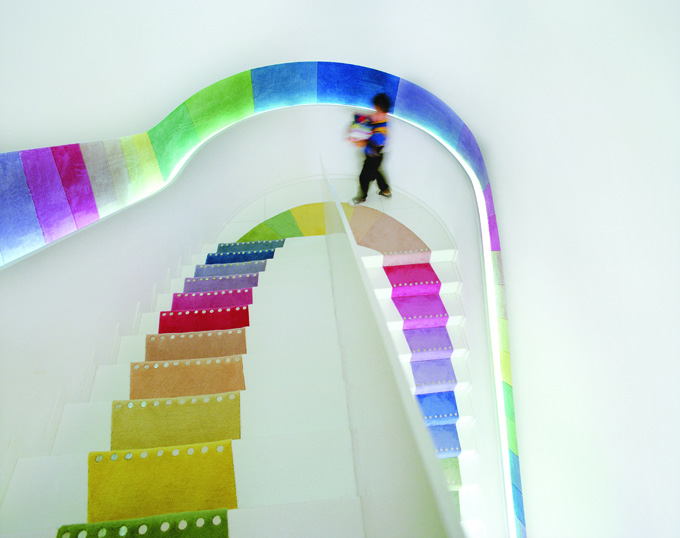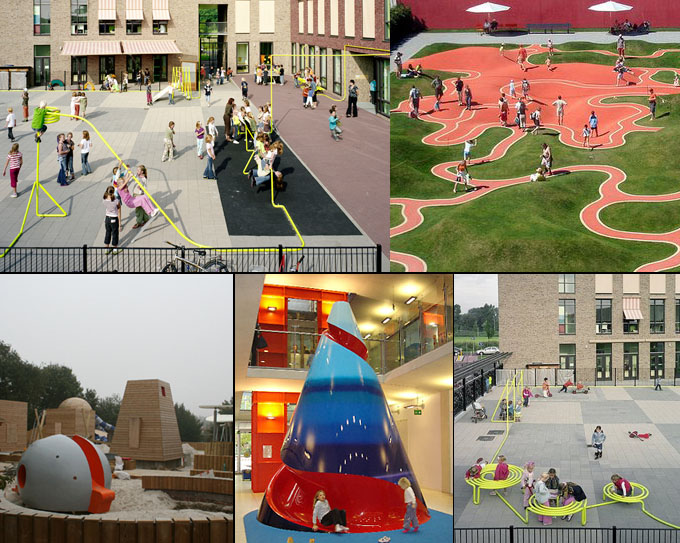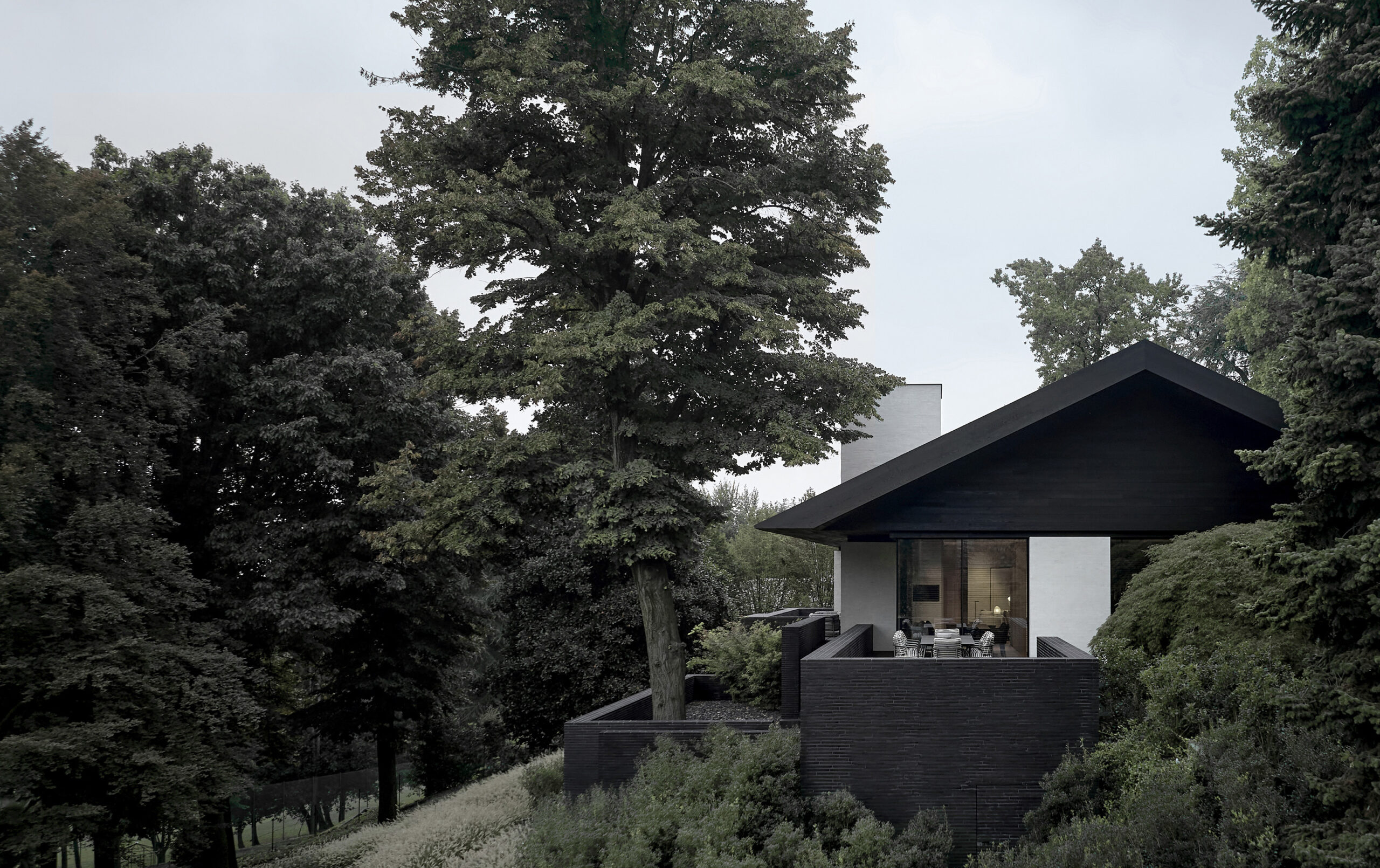
Kids have boundless imaginations. No matter how poor, colourless and toyless their environment, they’ll find a way to play. They will play with stones, twigs, grass and water, and they will play with each other. They’ll think up ways of turning mundane items into creations that have all the life of the latest computer game.

.jpg)
But only if they are lucky enough to have the free time to play, are not too hungry to move about, or have water to play with.

In this light, what our urban kids have available to them, is excessively abundant. They have daycare and play spaces, parks, playgrounds, even yards. Yet, when we look at the basic play environments in our communities, there’s no denying that they are sadly short of what they could be. With some colour, imagination, labour and resources, they could all be so much better.

.jpg)

There are wonderful examples of this, such as the recent ‘accidental’ kids’ park at Madison Square Park in New York. It is an art installation by artist Jessica Stockholder, commissioned by the Madison Square Park Conservancy.


The installation includes a multicoloured triangular platform, a sandbox of bright-blue rubber mulch, multicoloured bleachers and painted pavement. It was not intended originally as a children’s play space, but kids have taken to it like crazy, surprising both the artist and the Conservancy. The lesson we can learn from this is that if we point our resources in the right direction, the result can be infinitely fun and rewarding for everyone involved.

We spend millions annually on ‘;adult playgrounds’; — stadiums, concert halls, bars, restaurants. We spend billions advertising and promoting them. Why is it that we do not seem to want to dedicate the necessary resources to give our children the best we can offer?

Every dedicated kids’ arts organization will be able to point you to reams of research reports that show that early access to arts and arts education aids children in all aspects of their lives later on.
.jpg)

They will build self-confidence; discover their abilities, skills and talents; and in the best of circumstances, they will grow to be fantastic contributors in their communities. Yet another reason to make sure our kids live and play in environments that are rich in creativity, arts and inspiration.

If this generation of children is going to be responsible for solving the problems of a world where children are still too hungry to play at all, then we should be paying closer attention. We should be giving our kids — regardless of their resources — all the support and inspiration we can.

Anyone with creative ideas, energy, staff and money, can give to kids in his or her neighborhood. Who knows what could happen, if we as individuals, companies and cities paid as much attention to our kids’ play environments as we do to our own? – Tuija Seipell

Developers, city councils wanting to see ideas and concepts in how to design super cool educational environments and playgrounds effectively, contact our marketing agency, ACCESS AGENCY.


















